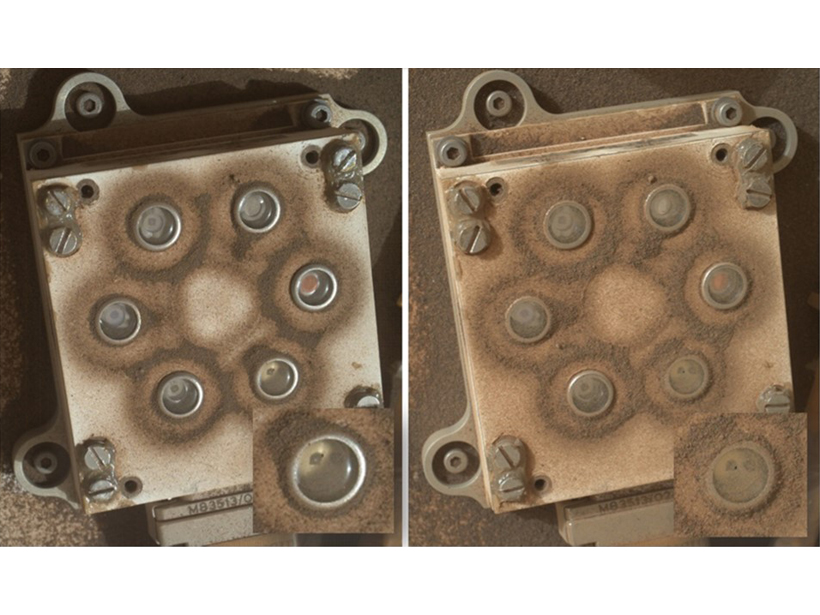Source: Journal of Geophysical Research: Planets
Planet-encircling dust events (here “global dust storms”, or GDS) are quasi-regular but quite rare events on Mars, where large amounts of dust, lifted from the planet’s surface by winds, become omnipresent in the atmosphere and wrap the whole planet in a dusty haze for some months.
Such events are readily observed with ground-based telescopes and satellites in Martian orbit. However, meteorological in-situ observations of such storms that ground truth data, such as these presented by Viúdez-Moreiras et al. [2019] are exceedingly rare due to the small number of meteorological stations on the surface of Mars.
Previously, only Viking landers had measured meteorological parameters (such as temperature, pressure, wind, and radiation) on the surface during such an event in the 1970s. Spirit and Opportunity, the Mars Exploration Rovers, witnessed a GDS in 2007 with their cameras, without meteorological equipment. Last year, Curiosity’s Rover Environmental Monitoring Station (REMS) seized the opportunity to monitor the impact of a GDS on the atmosphere from a unique vantage point.
Observations by the landers and rovers from different locations at the surface give interesting insight into the local meteorology and the effect of a global dust storm in a variety of regions. This paper is part of a special issue in JGR: Planets on Studies of the 2018/Mars Year 34 Planet-Encircling Dust Storm.
Citation: Viúdez‐Moreiras, D., Newman, C. E., Torre, M., Martínez, G., Guzewich, S., Lemmon, M., et al. [2019]. Effects of the MY34/2018 global dust storm as measured by MSL REMS in Gale crater. Journal of Geophysical Research: Planets, 124. https://doi.org/10.1029/2019JE005985
—Anni Määttänen, Editor, JGR: Planets
Text © 2019. The authors. CC BY-NC-ND 3.0
Except where otherwise noted, images are subject to copyright. Any reuse without express permission from the copyright owner is prohibited.

